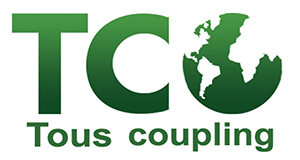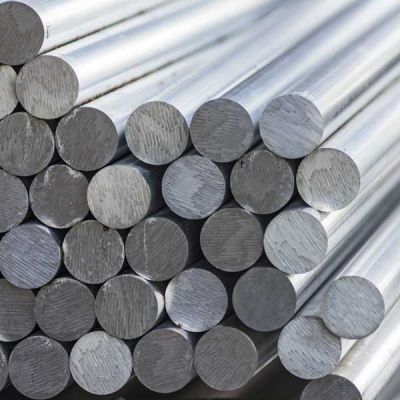Aluminum is the thirteenth element of the periodic table, which is represented by the symbol (Al). Aluminum is white, soft, non-magnetic and conductive. Aluminum is the third element and the most abundant metal in the earth’s crust (after oxygen and silicon). About 8% of the earth’s crust is made up of the widely used metal aluminum. Aluminum alloys are one of the most diverse alloys that have many applications due to their light weight and high durability.
Today, due to the great ability and applications of aluminum metal in the field of producing all kinds of metal parts and the increasing expansion of industries that use this metal as a parent metal in the supply of their raw materials. The market of all kinds of aluminum alloys has also become wider and wider.
Aluminum, as a parent metal, has this unique feature that by combining specific chemical elements, it shows more specific coordinates and capabilities than other metals. The price of aluminum metal in the Iranian market varies depending on the type of alloy. In order to obtain the desired properties and characteristics, aluminum alloying operation is usually done during the process of melting and casting on it.
Special types of aluminum are formed with the main properties of aluminum, which usually contain 90-96% aluminum, and in addition, they have one or more other elements that have been added to aluminum in order to improve the properties. Usually, in addition to the main alloying elements, aluminum alloys also contain several minor alloying elements that have a small amount but have a great impact on their properties.
Specifications and characteristics of aluminum alloy
Corrosion resistance
One of the properties of pure aluminum is corrosion resistance. Now, if we turn aluminum into one of the aluminum alloy categories by alloying according to the needs, due to the positive effect of the added elements, its corrosion resistance can be improved. Attention increases.
Many grades of aluminum alloys have a high resistance to atmospheric and chemical corrosion due to the natural formation of an oxide layer adhering to the surface. This characteristic is more obvious in the 1xxx, 3xxx, 5xxx and 6xxx series alloys, which we will explain each one below.
Capability in thermal conductivity
Aluminum alloys have a very high thermal conductivity and due to the fact that they melt at a lower temperature than steel, but in case of proximity to fire, the temperature of aluminum alloys rises at a much slower rate.
Capability in electrical conductivity
Aluminum and some aluminum alloys have very high electrical conductivity, and in this sense, they are ranked second among commercial conductive metals after copper. One of the main reasons is the high approach of electrical and electronics industries to their ability and its more affordable price compared to copper.
The right ratio of strength to weight
Aluminum does not show much change in terms of weight after alloying, in other words, the high strength of aluminum alloy compared to its weight is one of the basic factors of choosing it compared to other metals. Aluminum with its low density is suitable for making engineering alloys.
Although their strength is not as strong as steel, but the ratio of strength to weight is high in them, and for this reason, there are many commercial aluminum alloys. The strength of most of these alloys can be increased through precipitation hardening or hot working.
Resistance to failure
By alloying, the level of resistance against breaking in aluminum alloys increases significantly, or in other words, their toughness increases. Many aluminum alloys are tough and are used in applications where resistance to brittle fracture and crack growth is required.
Very high functionality
After undergoing the alloying process, aluminum alloy shows flexibility and a very high ability to be used, which can be achieved by both the extrusion process and various types of machining and cnc works. Basically, one of the characteristics of aluminum is that by alloying it and obtaining different types of aluminum alloys, the workability of this metal can be increased.
High connectivity
All kinds of aluminum alloys can be connected to other surfaces with a wide range of connection methods such as welding, soldering, riveting, even gluing and nailing.
Recyclability
Aluminum alloy has a very low percentage of non-recyclable waste, and the remaining production of each category can be easily recovered using the process of remelting and recasting, and after recycling, materials with the same quality can be obtained again.
Aluminum alloy series
Aluminum alloys are one of the most diverse alloys that have many applications due to their light weight and high durability. Aluminum alloys are divided into 8 general series, which include 1000, 2000, 3000, 4000, 5000, 6000, 7000 and 8000 series. The alloy used for the production of pulleys and couplings is from the 6000 series.
| سری | عناصر آلیاژی اصلی | ویژگی های اصلی | نمونه کاربردها |
|---|---|---|---|
| 1xxx | 99درصد آلومینیوم خالص | High electrical and thermal conductivity, excellent corrosion resistance. | Electrical conductors and chemical processing equipment. |
| 2xxx | مس | High strength-to-weight ratio, low corrosion resistance. | Truck wheels and suspensions, aircraft fuselage, and wings. |
| 3xxx | منگنز | Moderate strength and good workability. | General sheet work, recreation vehicles, electronics. |
| 4xxx | سیلسیم | Low melting point and thermal expansion, high wear resistance. | Welding wire and brazing alloy, architectural applications, forged engine pistons. |
| 5xxx | منیزیم | Moderate-to-high strength, good weldability, good corrosion resistance. | Appliances, automotive parts, marine components. |
| 6xxx | سیلسیم و منیزیم | استحکام متوسط با شکل پذیری خوب، جوش پذیری، ماشین کاری و مقاومت در برابر خوردگی. | کاربردهای سازه ای، اکستروژن های معماری، تجهیزات تفریحی. |
| 7xxx | روی | Moderate-to-very high strength. | Airframe structures, mobile equipment, high-stress parts. |


